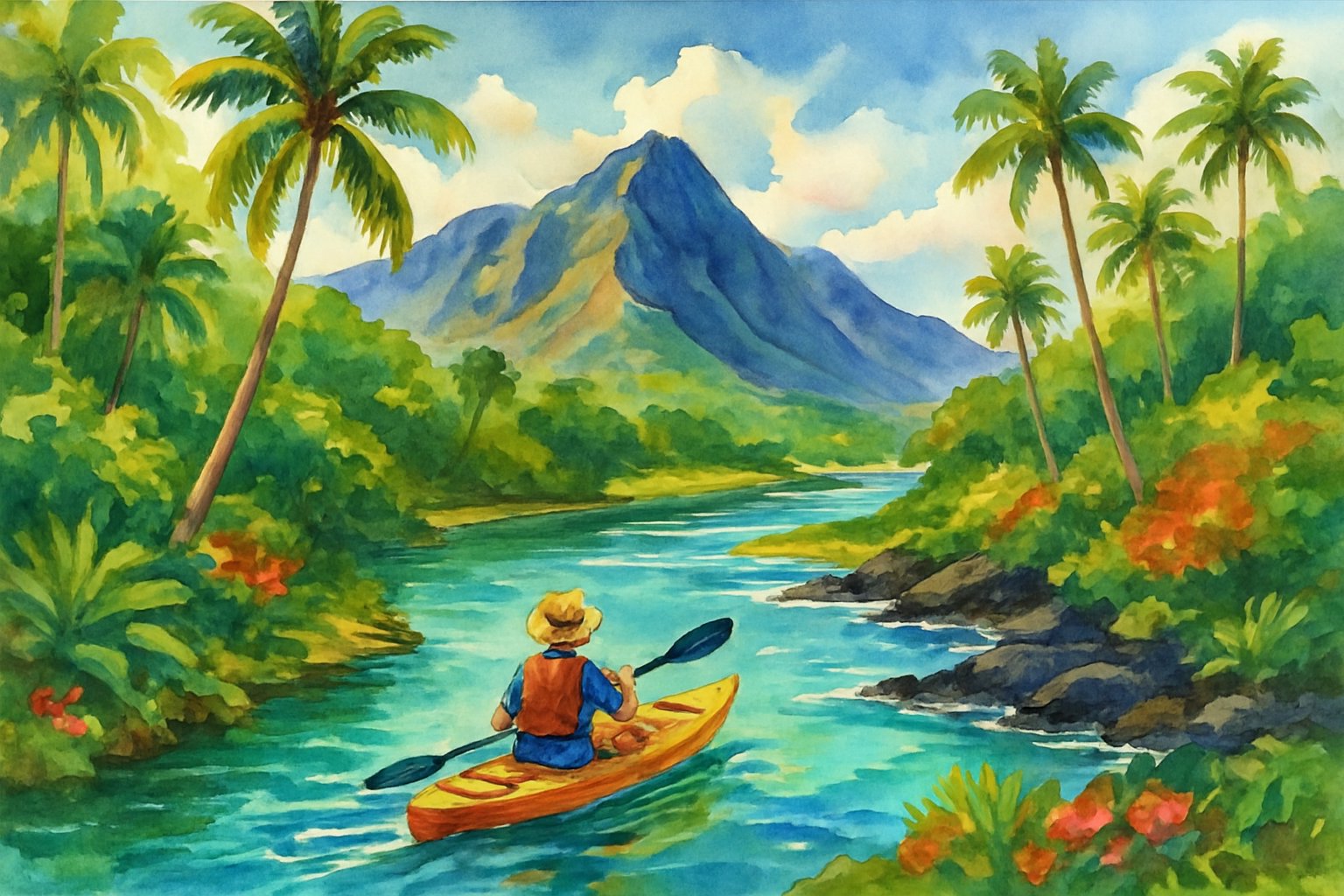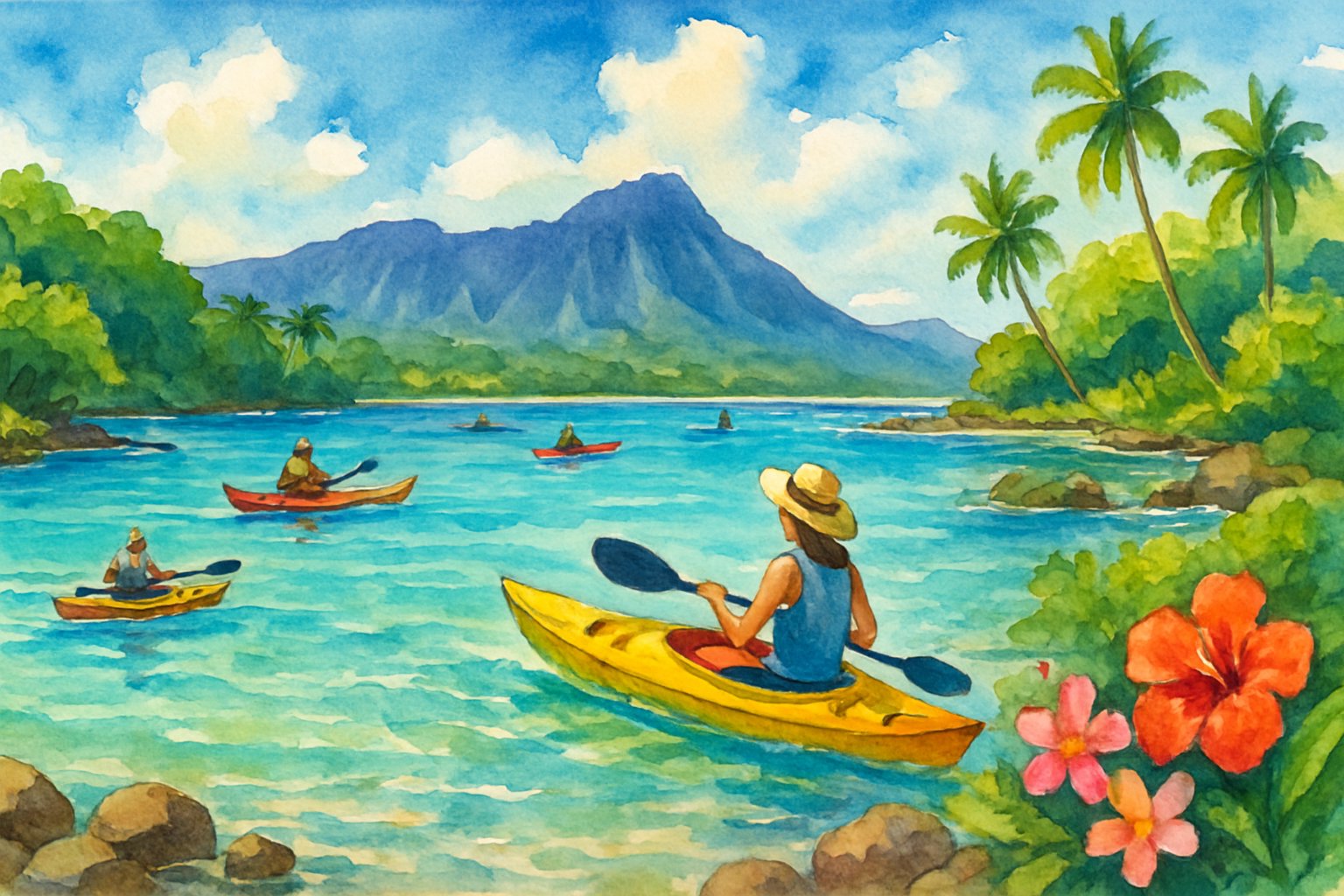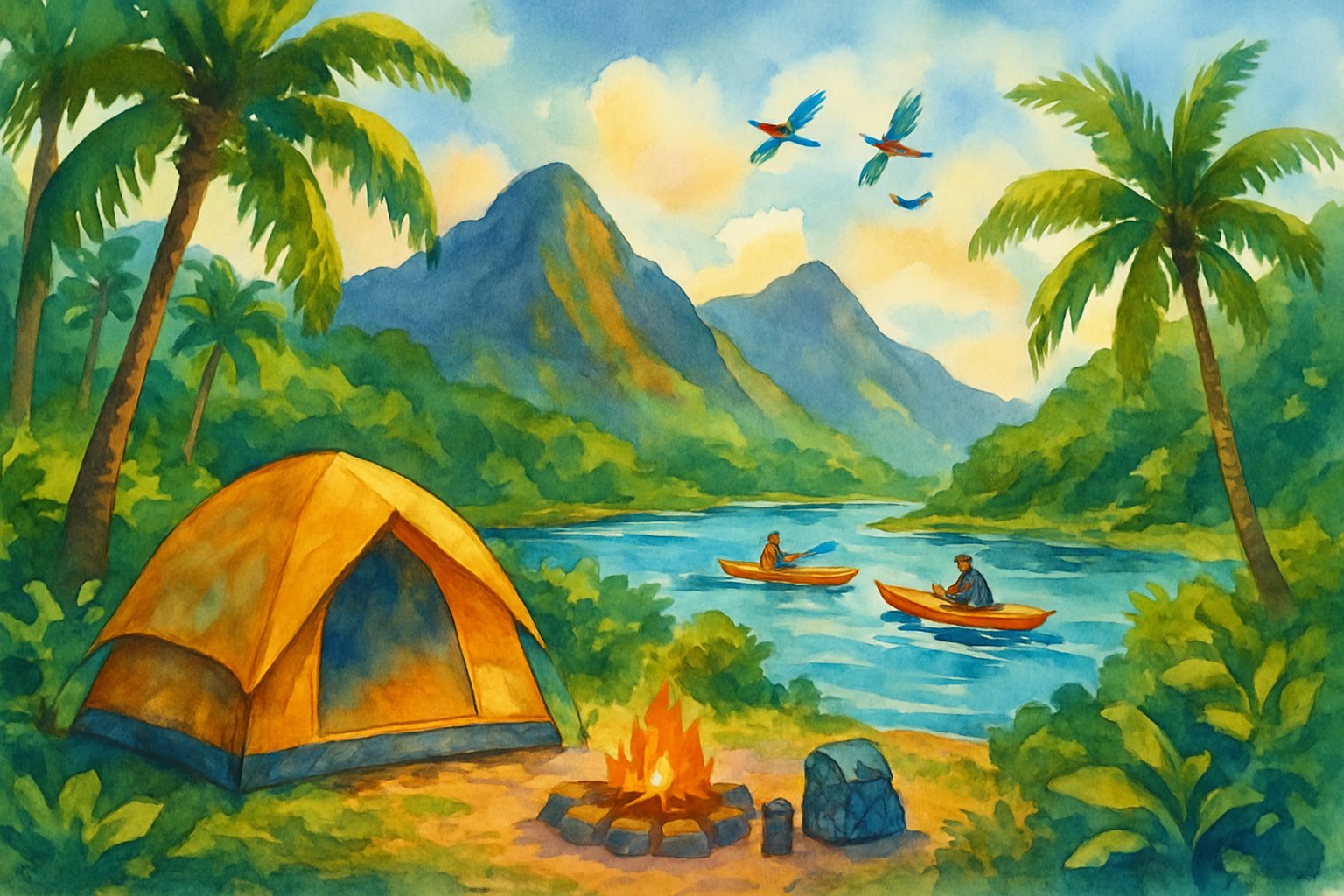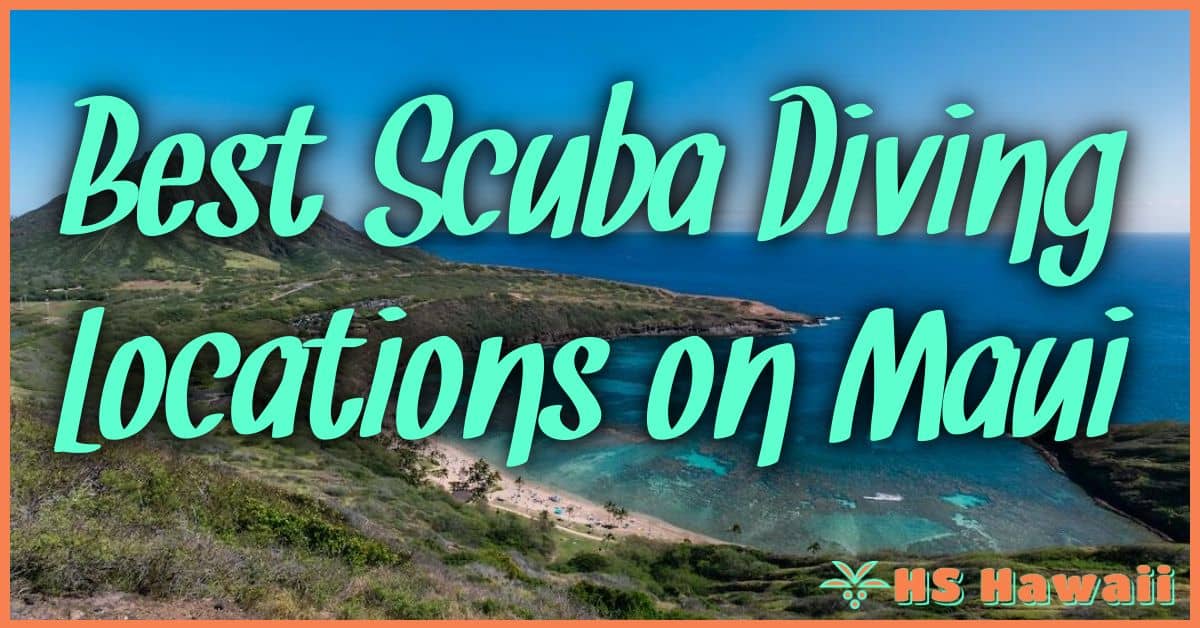When I think of outdoor adventures in Hawaii, kayaking is always at the top of my list. Hawaii has some of the best kayaking spots with beautiful rivers and calm bays that suit both beginners and experienced paddlers.

From the peaceful Wailua River on Kauai to the sheltered waters of Kailua Bay, I can always find a route that lets me explore the islands in a unique way.

Each island gives a different kayaking experience. On Kauai, the Hanalei River and Hanalei Bay let me paddle through stunning scenery and spot wildlife along the shore.
If I want clear and gentle waters, I go to Kaneohe Bay on Oahu, which has calm conditions and amazing views of the mountains and ocean.
When I get out on the water in Hawaii, I paddle through lush forests and along sandy beaches. Sometimes, I even spot a sea turtle.
Kayaking here is more than just a workout. It’s a great way to see Hawaii’s unique rivers and bays.
Why Kayaking in Hawaii Is Unique

Kayaking in Hawaii lets me explore natural features, learn about Hawaiian culture, and enjoy the outdoors all year. Each trip feels different because the islands offer so many places to paddle.
Diverse Landscapes
Hawaii’s landscapes are unlike anywhere else I’ve kayaked. I paddle through open ocean, along lush river valleys, and beside dramatic volcanic cliffs.
On Kauai, I glide along the only navigable rivers in Hawaii, surrounded by forests, mountains, and waterfalls.
Sea kayaking takes me past sea caves, hidden coves, and long stretches of quiet beach. On Oahu, the Kahana River goes right through dense rainforests filled with bird sounds.
The mix of ocean bays, calm rivers, and tropical backdrops always gives me something new to see.
Rich Hawaiian Culture
As I paddle, I notice that Hawaiian traditions and beliefs are part of the water around me. On some guided kayak trips, local guides teach me about the history and stories of the Hawaiian Islands.
Many rivers and bays have Hawaiian names that tell about the land and its people. I often see stone fishponds, ancient taro patches, and heiau (temples) along some shorelines.
These places remind me that people have lived and traveled on these waters for centuries. I feel respect and gratitude toward the culture and those who came before me.
Learning a few Hawaiian words, understanding local customs, and listening to stories helps me connect more with the places I paddle.
Year-Round Adventure
I love that kayaking in Hawaii is possible all year. The islands’ tropical climate means warm weather and calm waters most of the year.
Even in winter, it rarely gets too cold to enjoy a day on the water. Some bays are great for beginners, while more experienced paddlers like me can choose rougher ocean routes.
When water levels change, some rivers become technical and challenging, making paddling here feel more like canyoneering.
Most rentals and tours are available all year, so I can experience the outdoors whenever I want.
Top Rivers for Kayaking Experiences
Kayaking in Hawaii lets me paddle on rivers surrounded by lush scenery, wildlife, and local history. Each river has its own landscape, paddling difficulty, and things to see along the way.
Wailua River Adventures
My favorite place to kayak in Kauai is the Wailua River. It is one of Hawaii’s only navigable rivers, making it safe for beginners and relaxing for experienced paddlers.
The waters are calm and the current is gentle, so I can take my time and enjoy the scenery. Wailua River stretches about 20 miles, but I usually stick to the lower, scenic sections.
I love paddling past thick green jungle and tall cliffs. The river winds through old Hawaiian villages, and I stop for hiking or a picnic.
Some parts of the Wailua River lead to waterfalls, like Secret Falls, only reached by both kayak and a short hike. Along the way, I see tropical birds and sometimes turtles.
Guided tours are popular here, especially for first timers wanting to learn more about the area and its history.
Hanalei River Exploration
The Hanalei River, also on Kauai, starts in wet mountain valleys and flows down to Hanalei Bay. This river is about 15 miles long, but I usually begin my journey in the lower sections near the bay.
The current is calm, which makes for an easy paddling experience for all skill levels. While paddling, I see taro farms, lush forests, and sometimes water birds.
The water is often clear and reflects the nearby mountains. When I reach the end, I arrive at Hanalei Bay, where I can swim or relax on the sandy beach.
Wildlife is part of the adventure here. I spot fish and native birds, and the area is peaceful in the early morning.
Renting a kayak is simple, and many shops near the bay offer helpful advice. This river gives me a gentle ride and beautiful views.
Anahulu River Highlights
When I visit Oahu, I kayak on the Anahulu River in the town of Haleiwa. This river flows right into the ocean, and the area is known for its sea turtles.
Paddling the Anahulu is easy, with little current, so it is perfect if I am just starting out. The river is not very long, but it is wide and open, giving me space to move at my own pace.
Early in the day, the water is calm and reflects the sky. I enjoy spotting turtles basking on the banks or swimming beside my kayak.
Near Haleiwa, I see small bridges and old buildings that show the town’s history. Rental shops are nearby, and I can always find a spot for a snack after my trip.
The Anahulu River is a relaxing place to enjoy Oahu’s natural beauty and watch for wildlife.
Best Bays for Kayaking in Hawaii

Hawaii has some of the most beautiful bays in the Pacific Ocean. Calm waters, coral reefs, and wildlife create amazing paddling experiences.
Some bays are great for beginners, while others are best for exploring natural wonders.
Kealakekua Bay Wonders
When I paddle in Kealakekua Bay on the Big Island, I feel like I’m in a living aquarium. The water is very clear, so I see colorful tropical fish and sometimes spinner dolphins.
The protected bay is surrounded by lush cliffs, giving me great views and shade in some spots. Kealakekua Bay is also a historic site.
Captain James Cook landed here in 1779. Sometimes, I spot snorkelers near the monument, which is only accessible by boat, kayak, or a tough hike.
Kayaks let me get close to the shoreline and its lava rock formations. I like to go early for the calmest water.
Kealakekua Bay’s gentle waves suit beginners and kids, but I always wear sun protection and check weather conditions. Dolphins are wild and should not be chased.
Respecting marine life keeps this bay beautiful.
Kaneohe Bay’s Coral Reefs
Kaneohe Bay, on Oahu’s windward side, is my favorite spot for exploring coral reefs. The bay is sheltered by a large barrier reef, so the water is often calm—perfect for paddling.
Even as a beginner, I can handle the gentle current. This bay is home to the only barrier reef in the Hawaiian Islands, so there’s a lot of marine life.
Sometimes I see sea turtles swimming below. Sandbars appear during low tide, and I like to stop there for a break or a picnic.
Guided tours are available, but independent kayakers can also explore safely. I always bring a waterproof map.
Boating is allowed in certain areas, but kayaks are quieter and make it easier to see the fish below. More information about Kaneohe Bay’s calm waters and coral reefs is at this Kaneohe Bay kayaking guide.
Hanalei Bay Serenity
On Kauai, Hanalei Bay is where I go for peaceful kayaking. The bay is formed by streams from lush mountains meeting the Pacific Ocean, which keeps the scenery green and the water fresh in some spots.
It’s a large, crescent-shaped bay with a long sandy beach—perfect for resting between paddles.
Hanalei Bay is less crowded than other spots, especially early in the morning. Sometimes I see local fishers launching boats from the shore.
The calm water and gentle waves make this bay inviting, even for new kayakers. The Hanalei River enters at the east end, so I can paddle upstream to see more trees and birds.
Conditions can change quickly, so I always watch the weather. Renting a kayak from a local shop is easy, and gear is usually included.
This spot lets me feel close to nature and away from city noise.
Wildlife Viewing on Hawaiian Waters
Kayaking in Hawaii lets me get close to native wildlife. I often see unique birds and marine creatures while gliding across rivers and bays.
Spotting Tropical Birds
When I paddle along quiet shorelines and riverbanks, I see many tropical birds. Brightly colored Hawaiian honeycreepers fly between the trees.
I also notice white fairy terns gliding over the water. Sandpipers and herons walk along sandy shores searching for food.
Some of the best places to see birds are near wildlife refuges and natural areas. For example, the Hanalei River flows past a national wildlife refuge, where I often see native and migratory birds.
In Kailua Bay, green sea turtles share the area with seabirds nesting on rocky outcrops. Birdwatching is best early in the morning, when the birds are active and the water is calm.
Here are common birds I might spot while kayaking:
- Hawaiian stilt
- Nene (Hawaiian goose)
- Black-crowned night heron
- Hawaiian coot
Marine Life Encounters
As I paddle through Hawaii’s clear waters, I often spot marine life just below my kayak. Green sea turtles appear frequently, especially in places like Kailua Bay and around the Mokulua Islands.
Sometimes, spinner dolphins swim close by and leap out of the ocean. In calm bays, I watch for colorful reef fish and may see rays gliding along the sandy bottom.
During winter, I sometimes spot humpback whales farther out in deeper waters. When I kayak near coral reefs, I look for:
- Butterflyfish
- Parrotfish
- Moorish idol
- Occasionally, resting sea turtles
Every kayak trip feels special thanks to this mix of birds and marine animals.
Guided Tours and Self-Guided Adventures
When I plan a kayaking trip in Hawaii, I choose between joining a guided tour or going on a self-guided adventure. Each option offers something different, so I think about what matches my paddling experience and interests.
Choosing a Guided Kayak Tour
I join a guided kayak tour when I want to learn about the area and stay safe in new waters. Guides share facts about local history, wildlife, and plants.
Some tours include short hikes or provide snacks and gear. Guided tours work well for beginners or those with little paddling experience.
Guides know the best spots and help avoid strong currents or rough conditions. In Hawaii, I find tours along beautiful rivers and famous bays.
For example, Rainbow Kayak Tours leads trips on the Wailua River where I see waterfalls and old Hawaiian sites. When I book a guided tour, I get help with equipment, transportation, and safety gear.
Some tours offer group rates, private trips, or family-friendly options. I check reviews and ask about group size and what’s included before choosing a tour.
More details are on Hawaii’s top kayaking tours.
Planning a Self-Guided Trip
A self-guided kayak trip in Hawaii lets me explore at my own pace. This works best if I have paddling experience and feel comfortable with navigation and water safety.
When I rent a kayak, I usually get instructions on securing it to my car and tips for the best launch spots. I like setting my own schedule, choosing where to stop, and paddling as long as I want.
Places like the Kahana Rainforest River offer calm waters and quiet valleys for a peaceful paddle. I bring my own gear or rent it, and I check the weather and tide conditions before heading out.
If I want to explore both rivers and bays alone, I find rental shops that provide all the equipment and directions. For a self-guided experience, Kahana Rainforest River and Waikiki Adventures offer easy rental and launch options for different skill levels.
Camping and Kayaking: Combining Two Adventures

I love that Hawaii lets me mix camping with kayaking. I paddle to hidden spots, set up camp on quiet beaches, and wake up to the sound of waves outside my tent.
This adventure feels wild and refreshing.
Top Campsites for Kayakers
Some campsites in Hawaii are perfect for kayakers who want both outdoor fun and convenience. At Kalalau Beach on Kauai’s Na Pali Coast, I can join a guided kayak camping tour for a safe and scenic trip.
This route is famous for its untouched beauty and dramatic cliffs. Kailua Bay on Oahu has sandy shores for kayak landings and nearby campgrounds, making camping easy.
Maui’s Hana Bay offers calm waters where I can paddle to my campsite with less stress. Each spot gives me a chance to sleep close to the water.
Before I settle in, I check if the campsite allows camping and see if I need a permit. I always follow local rules to keep these places clean.
Tips for Overnight Kayak Trips
Packing right makes overnight kayak trips much easier. I bring a waterproof tent or dry bags for all my gear, including a sleeping bag, food, water, and a first-aid kit.
A small camping stove fits in my kayak and lets me cook simple meals by the shore. I organize my gear in labeled dry bags, so setting up camp is quick after a long paddle.
Planning meals ahead, bringing easy snacks, and never leaving trash behind helps keep the area clean. I check weather updates, tell someone my route, and pack a phone or GPS for safety.
Some Hawaiian spots have strong currents or sudden rain, so I stay alert and avoid paddling after dark. I check my kayak for leaks before loading gear.
A headlamp, bug spray, and extra water always make nights more comfortable.
Essential Tips for a Safe and Fun Paddling Experience
I always plan ahead before any kayaking trip in Hawaii. Knowing the safety rules and what gear to bring keeps my trip fun and stress-free.
Good timing and the right weather make a big difference when I’m out on the water.
Safety Guidelines
My safety comes first whenever I kayak in Hawaii. I always wear a properly fitted life jacket.
A paddle leash keeps my paddle close if I tip over. I check local weather and ocean forecasts before heading out.
Sudden wind or changing tides can make conditions unsafe. If I kayak in rivers, I check the flow rate to watch for hazards like low water or fast currents.
I stick to marked areas, especially where boats or jet skis pass by. I never kayak alone and always let someone know my route and when I plan to return.
I protect myself from the sun by applying water-resistant sunscreen and wearing hats or long sleeves.
Here’s a quick safety checklist:
| Item | Reason |
|---|---|
| Life Jacket | Prevents drowning |
| Paddle Leash | Keeps paddle close |
| Check Weather/Floods | Avoids dangerous conditions |
| Tell Someone Your Plan | Emergency help if needed |
Packing the Right Gear
The right gear makes my kayaking adventure better. Along with my life jacket and paddle, I pack a dry bag for essentials like my phone and snacks.
I bring plenty of water to stay hydrated under the hot Hawaiian sun. A laminated map or GPS device helps me stay on course, especially in rivers or wide bays.
Some rental shops provide useful maps or guides, which help when kayaking the Wailua River.
Sun protection is important, so I bring a hat, sunglasses, and lightweight, long-sleeve clothing. I use reef-safe sunscreen to protect myself and Hawaii’s marine life.
If I plan to paddle far, I add a simple repair kit or a whistle for emergencies.
Ideal Seasons and Weather
Spring and summer offer the best conditions for kayaking in Hawaii. The water stays calm and the days are usually sunny.
I avoid kayaking after heavy rains. River levels can rise, and runoff may reduce water clarity and safety.
Winds often increase in the afternoon. I head out in the morning when the breeze is lighter and the sun provides great views.
Clear skies and gentle tides help me explore bays and rivers easily.
Before every trip, I check weather reports and tide tables. This helps me stay safe and enjoy kayaking in Hawaii.




